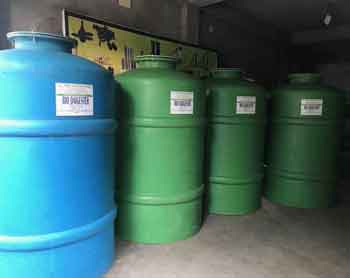
Posted On: 11th February, 2020
A bio-digester toilet is a toilet system based on a decomposition mechanism. The toilets break down fecal matter and human waste into bits in its FRP Bio digester tank. High-grade bacteria are responsible for the decay. After breaking down, the wastes get converted into water and methane. Then they get released to a desirable surface. The toilets don’t need any maintenance or any sewage system.
Auto-generation takes place among these high-grade bacteria present in the toilets. The key mechanism depends on the biodegradation of organic wastes. This can work at different temperature ranges. At -20 degrees Celsius temperature, the bacterial consortium helps to degrade night soil. It forms an odourless, colourless and inflammable gas that contains 50 to 70% methane. Enrichment, adaptation and bio-augmentation of cold-active bacteria collected from low-temperature areas make up the consortium. The areas may include Antarctica.
These lavatories consist of 3 anaerobic chambers to treat human wastes. The system features a unique methodical structural arrangement. Thus it doesn’t need any sort of cleaning or emptying the tank to undertake. In the first chamber, the human waste gets in from the outlet of the toilet. As the solid drops to the bottom of the FRP Bio digester tank, the bacteria start working. They eat away the waste and decay occurring pathogens.
As the first chamber fills up, the water flows to the next chamber. In this chamber, the same mechanism takes place. However, the solid/biological/sludge matter is left in the initial chamber. Now the water flows to the last chamber. This time, the water is almost 90 percent clean. And the final phase of digestion kicks off.
Through the entire process, cleansing water runs – from the first to the endpoint, until the water gets out of the digester. As the activated water comes out from the digester and gets into the irrigation pipelines, it is about 98 percent clean. This water is free from harmful pathogens. You can use the treated water for underground irrigation purposes. However, this water is not suitable for human or animal consumption. It is not ideal for house cleaning as well.
There are a number of benefits of using such lavatories. Let’s find some of them.
Considering the mechanism and benefits of the toilet systems, you can install it at a suitable facility. The toilets are available as full-modular cabin and toilet-seat attached forms. You can also connect a bio-digester tank to the commode outlet as per your choice.